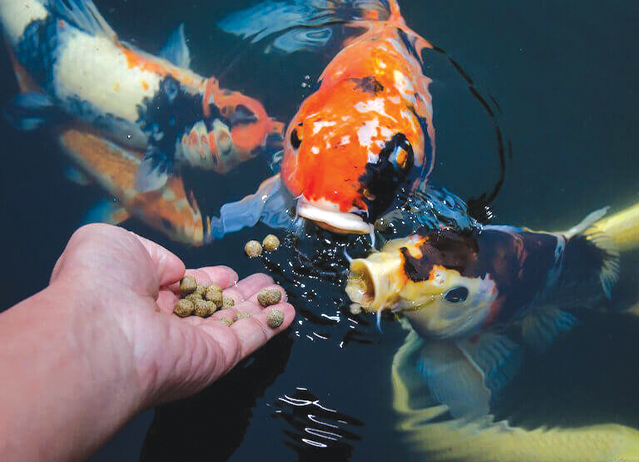A solid fish aquarium begins with the right nourishment. There are many kinds of fish food available – which one should you pick?
When it comes to pets, diet is always a hot topic. Everyone has a choice in pet food, and fish are no different. Fish aren’t usually picky eaters and will generally accept whatever food they’re given, but not all fish foods are created equal. Let’s discuss the types of fish foods available and the pros and cons of each.
Types of Fish Foods
Fish food comes in a wide variety. Thebest fish food for beginner aquarists is flake food. It’s widely available, inexpensive, and seems to do the job. Most domesticated fish will readily accept flake foods without any fuss. However, those who are more experienced in the hobby tend to avoid flake foods, regardless of the quality or ingredients. The main reason is that flake foods break down quickly once they get wet, which can cause water quality issues. Another reason to avoid flake food is that when fish come to the surface to eat it, they swallow air, which can cause swim bladder problems, among other things.
Pellet food lasts longer in the water, giving fish more time to eat it before it breaks down. Pellets sink in the water and eliminate the problem of fish swallowing air. It also prevents one dominant fish from eating more than the others, as it takes longer for them to eat. Similar to pellets, some companies offer crumbles and sticks. These foods are similar to pellets in nature, just in different shapes. If you’re using pellets, be sure to get a size that is appropriate for the fish you are feeding.
Frozen fish foods are highly regarded by most experts. It’s as close to feeding live food as you can get, without keeping live worms and shrimp around your home. Frozen food comes in many varieties, including blood worms, black worms, brine shrimp, and daphnia. Frozen foods can be kept in the freezer for long periods without spoiling and are higher in nutrients than commercial foods. Each type comes portioned for easy prep and can be fed by simply popping it out of the container and into the aquarium.
The last type of fish food is live. Live foods are nutritionally the best and closest to the natural diets of fish. Some of these you can culture yourself, like small white worms and daphnia. These are safe and easy to feed, but many people are squeamish about keeping them, and others don’t want the hassle of caring for fish food. There are some risks with live foods, such as mosquito larvae – if the larvae hatch, there is a risk of mosquito-borne diseases, so be cautious if you choose this route.
Related: Tetra 101: Introduction to Schools of Fish
Quality of Fish Food
Fish food comes in many different varieties, made from a wide range of ingredients. The key thing to look for in the ingredients list is the absence of fillers. It’s similar to choosing dog or cat food: you want to know what the main ingredient is. Typically, you should look for specific ingredients rather than vague terms like “fish parts.” The fish food available at retail stores is often not very nutritious. In contrast, the food sold at aquarium stores tends to be of better quality. Additionally, there are many online sources for various types of fish food. My favorite is kensfish.com.
How Much & How Often?
How often you feed your fish is based on a few factors. If the fish are young fry or juveniles, they need to eat more frequently. Feeding your fish the right amount at the right frequency is difficult for their health and well-being. You’ll need to feed little fish, known as fry, many times a day.
Juveniles, who are a bit older, should be fed once or twice a day to hold up their growth and health. Matured fish need to be fed once a day, but many experts advise feeding them only once every few days to mimic their natural eating habits.
The feeding quantity can also based on the type of fish. In this case, plecos need a constant supply of driftwood for digestion and will graze on algae throughout the day. Goldfish, on the other hand, eat continuously in the wild but remember that what they consume will affect the quality of your water. Also, if you’re trying to increase the fish breed, well-fed fish are normally more willing to reproduce, so giving them an extra can help.
When it comes to how much to feed your fish, it’s important to consider your tanker capacity. Only provide what your fish can eat in a little amount of time. If you notice leftover food lingering after feeding, you should reduce the amount next time.

There are a lot of decisions for what to look after your fish, and the best way to pick is to find out the types of fish, point out what they eat in the forest, and find a food that closely looks like it in fixings. Feed your fish to the point of being solid, however, taking too much food can cause medical problems and even cause heftiness.

